Influences of Cutting Speed and Material Mechanical Properties on Chip Deformation and Fracture during High-Speed Cutting of Inconel 718
Abstract
:1. Introduction
2. Finite Element Modelling of Orthogonal Cutting
2.1. Modelling Procedure
2.2. Constitutive Model of Inconel 718
2.3. Chip Separation Criterion
3. Results and Discussions
3.1. Geometrical Characteristics of Chips
3.2. Chip Deformation and Fracture under Different Cutting Speeds
3.3. Influence of JC Constitutive Parameters on Chip Shear Localization
3.4. Influence of JC Fracture Parameters on Chip Shear Localization
4. Conclusions
- The material constitutive parameters of initial yield stress A and hardening modulus B have positive relationships with the chip localized shear deformation, while the parameters n, C, and m all have the opposite influence on chip shear localization. The effects of parameters A and m on chip localized shear deformation are much more remarkable than the other three parameters. With the parameter A or m varying from a 20% decrease to a 20% increase, the chip shear localization sensitivity changes by 67.7% and 64.6%, respectively.
- When the JC fracture parameters of the workpiece material decline, the chip localized shear deformation is promoted while it is repressed when the material fracture parameters improve. The results demonstrate that the influences of parameters D1 and D2 on chip localized shear formation are more remarkable than the other three parameters. The chip shear localization sensitivity is larger than 70% when the parameter D1 or D2 is zero.
- The research demonstrates that an increase in the cutting speed promotes chip serration in Inconel 718 until the chip morphology becomes fragmented at the critical cutting speed of 7000 m/min. Serrated chips are generated by the mechanism of plastic deformation combined with ductile fracture, while fragmented chips are generated by brittle fracture due to embrittlement of the workpiece material under ultra-high cutting speeds.
- The limitation of this paper is that the influences of material mechanical properties on the chip formation process are researched only with JC material models and only the orthogonal cutting method has been focused on. The influence of other material models on the chip formation process and chip formation in more complex cutting modes will be researched in the future.
Acknowledgments
Author Contributions
Conflicts of Interest
References
- Kim, H.; Cong, W.L.; Zhang, H.-C.; Liu, Z.C. Laser engineered net shaping of nickel-based superalloy Inconel 718 powders onto AISI 4140 alloy steel substrates: Interface bond and fracture failure mechanism. Materials 2017, 10, 341. [Google Scholar] [CrossRef] [PubMed]
- Agmell, M.; Ahadi, A.; Zhou, J.M.; Peng, R.L.; Bushlya, V.; Ståhl, J.-E. Modeling subsurface deformation induced by machining of Inconel 718. Mach. Sci. Technol. 2017, 21, 103–120. [Google Scholar] [CrossRef]
- M’Saoubi, R.; Axinte, D.; Soo, S.L.; Nobel, C.; Attia, H.; Kappmeyer, G.; Engin, S.; Sim, W.M. High performance cutting of advanced aerospace alloys and composite materials. CIRP Ann. Manuf. Technol. 2015, 64, 557–580. [Google Scholar] [CrossRef]
- Ren, X.P.; Liu, Z.Q. Influence of cutting parameters on work hardening behavior of surface layer during turning superalloy Inconel 718. Int. J. Adv. Manuf. Technol. 2016, 86, 2319–2327. [Google Scholar] [CrossRef]
- Su, G.S.; Liu, Z.Q.; Li, L.; Wang, B. Influences of chip serration on micro-topography of machined surface in high-speed cutting. Int. J. Mach. Tools Manuf. 2015, 89, 202–207. [Google Scholar] [CrossRef]
- Maruda, R.W.; Krolczyk, G.M.; Nieslony, P.; Wojciechowski, S.; Michalski, M.; Legutko, S. The influence of the cooling conditions on the cutting tool wear and the chip formation mechanism. J. Manuf. Process. 2016, 24, 107–115. [Google Scholar] [CrossRef]
- Kuczmaszewski, J.; Zagorski, I.; Gziut, O.; Legutko, S.; Krolczyk, G.M. Chip fragmentation in the milling of AZ91HP magnesium alloy. J. Mech. Eng. 2017, 63, 628–642. [Google Scholar]
- Wang, B.; Liu, Z.Q. Serrated chip formation mechanism based on mixed mode of ductile fracture and adiabatic shear. Proc. IMechE Part B J. Eng. Manuf. 2014, 228, 181–190. [Google Scholar] [CrossRef]
- Wang, B.; Liu, Z.Q. Investigations on the chip formation mechanism and shear localization sensitivity of high-speed machining Ti6Al4V. Int. J. Adv. Manuf. Technol. 2014, 75, 1065–1076. [Google Scholar] [CrossRef]
- Samantaray, D.; Mandal, S.; Bhaduri, A.K. A comparative study on Johnson Cook, modified Zerilli-Armstrong and Arrhenius-type constitutive models to predict elevated temperature flow behaviour in modified 9Cr-1Mo steel. Comput. Mater. Sci. 2009, 47, 568–576. [Google Scholar] [CrossRef]
- Teng, X.; Wierzbicki, T. Evaluation of six fracture models in high velocity perforation. Eng. Fract. Mech. 2006, 73, 1653–1678. [Google Scholar] [CrossRef]
- Denguir, L.A.; Outeiro, J.C.; Fromentin, G.; Vignal, V.; Besnard, R. A physical-based constitutive model for surface integrity prediction in machining of OFHC copper. J. Mater. Process. Technol. 2017, 248, 143–160. [Google Scholar] [CrossRef]
- Calamaz, M.; Coupard, D.; Girot, F. A new material model for 2D numerical simulation of serrated chip formation when machining titanium alloy Ti-6Al-4V. Int. J. Mach. Tools Manuf. 2008, 48, 275–288. [Google Scholar] [CrossRef] [Green Version]
- Liu, J.; Bai, Y.L.; Xu, C.Y. Evaluation of ductile fracture models in finite element simulation of metal cutting processes. ASME J. Manuf. Sci. Eng. 2013, 136, 011010. [Google Scholar] [CrossRef]
- Ducobu, F.; Rivière-Lorphèvre, E.; Filippi, E. Material constitutive model and chip separation criterion influence on the modeling of Ti6Al4V machining with experimental validation in strictly orthogonal cutting condition. Int. J. Mech. Sci. 2016, 107, 136–149. [Google Scholar] [CrossRef]
- Ducobu, F.; Rivière-Lorphèvre, E.; Filippi, E. On the importance of the choice of the parameters of the Johnson-Cook constitutive model and their influence on the results of a Ti6Al4V orthogonal cutting model. Int. J. Mech. Sci. 2017, 122, 143–155. [Google Scholar] [CrossRef]
- Shi, J.; Liu, C.R. The influence of material models on finite element simulation of machining. ASME J. Manuf. Sci. Eng. 2004, 126, 849–857. [Google Scholar] [CrossRef]
- Umbrello, D.; M’Saoubib, R.; Outeiro, J.C. The influence of Johnson-Cook material constants on finite element simulation of machining of AISI 316L steel. Int. J. Mach. Tools Manuf. 2007, 47, 462–470. [Google Scholar] [CrossRef]
- Wang, B.; Liu, Z.Q. Shear localization sensitivity analysis for Johnson-Cook constitutive parameters on serrated chips in high speed machining of Ti6Al4V. Simul. Model. Pract. Theory 2015, 55, 63–76. [Google Scholar] [CrossRef]
- Mabrouki, T.; Rigal, J.F. A contribution to a qualitative understanding of thermo-mechanical effects during chip formation in hard turning. J. Mater. Process. Technol. 2006, 176, 214–221. [Google Scholar] [CrossRef]
- Johnson, G.R.; Cook, W.H. A constitutive model and data for metals subjected to large strains, high strain rates and high temperatures. In Proceedings of the Seventh International Symposium on Ballistics, The Hague, The Netherlands, 19–21 April 1983; pp. 541–547. [Google Scholar]
- DeMange, J.J.; Prakash, V.; Pereira, J.M. Effects of material microstructure on blunt projectile penetration of a nickel-based super alloy. Int. J. Impact Eng. 2009, 36, 1027–1043. [Google Scholar] [CrossRef]
- Editorial committee of China Aeronautical Materials Handbook. In China Aeronautical Materials Handbook Vol. 2: Wrought Superalloy & Cast Superalloy, 2nd ed.; Stand Press: China, Beijing, 2001; pp. 325–335. (In Chinese)
- Johnson, G.R.; Cook, W.H. Fracture characteristics of three metals subjected to various strains, strain rates, temperatures and pressures. Eng. Fract. Mech. 1985, 21, 31–48. [Google Scholar] [CrossRef]
- Erice, B.; Gálvez, F. A coupled elastoplastic-damage constitutive model with Lode angle dependent failure criterion. Int. J. Solids Struct. 2014, 51, 93–110. [Google Scholar] [CrossRef]
- Hillerborg, A.; Modéer, M.; Petersson, P.-E. Analysis of crack formation and crack growth in concrete by means of fracture mechanics and finite elements. Cem. Concr. Res. 1976, 6, 773–781. [Google Scholar] [CrossRef]
- Wang, B.; Liu, Z.Q.; Su, G.S.; Song, Q.H.; Ai, X. Investigations of critical cutting speed and ductile-to-brittle transition mechanism for workpiece material in ultra-high speed machining. Int. J. Mech. Sci. 2015, 104, 44–59. [Google Scholar] [CrossRef]
- Pawade, R.S.; Joshi, S.S. Mechanism of chip formation in high-speed turning of Inconel 718. Mach. Sci. Technol. 2011, 15, 132–152. [Google Scholar] [CrossRef]
- Ye, G.G.; Jiang, M.Q.; Xue, S.F.; Ma, W.; Dai, L.H. On the instability of chip flow in high-speed machining. Mech. Mater. 2018, 116, 104–119. [Google Scholar] [CrossRef]
- Buda, J. New methods in the study of plastic deformation in the cutting zone. CIRP Ann.-Manuf. Technol. 1972, 21, 17–18. [Google Scholar]
- Agmell, M.; Ahadi, A.; Ståhl, J.E. The link between plasticity parameters and process parameters in orthogonal cutting. Proc. CIRP 2013, 8, 224–229. [Google Scholar] [CrossRef]
- Yaich, M.; Ayed, Y.; Bouaziz, Z.; Germain, G. Numerical analysis of constitutive coefficients effects on FE simulation of the 2D orthogonal cutting process: Application to the Ti6Al4V. Int. J. Adv. Manuf. Technol. 2017, 93, 283–303. [Google Scholar] [CrossRef]
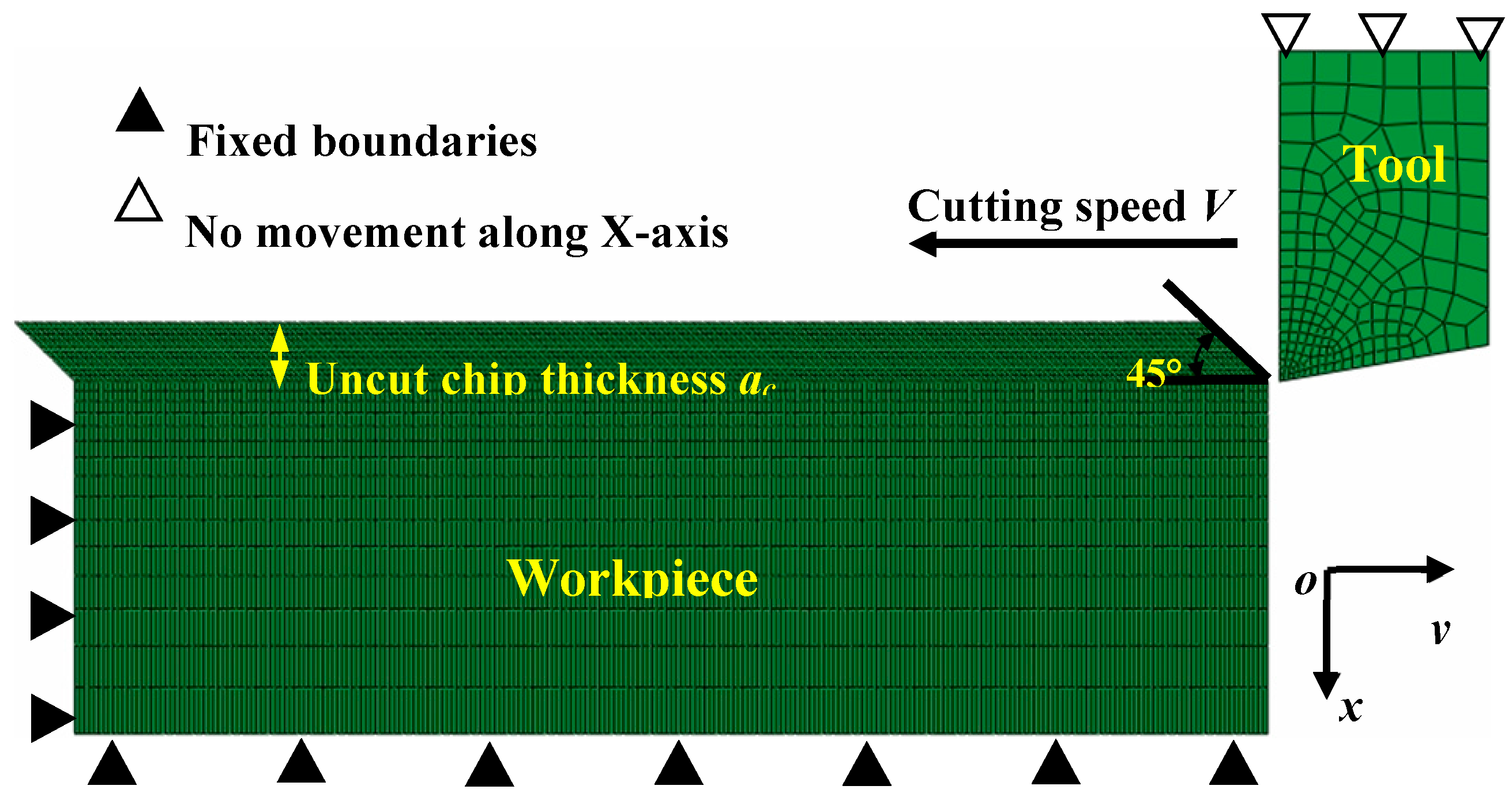
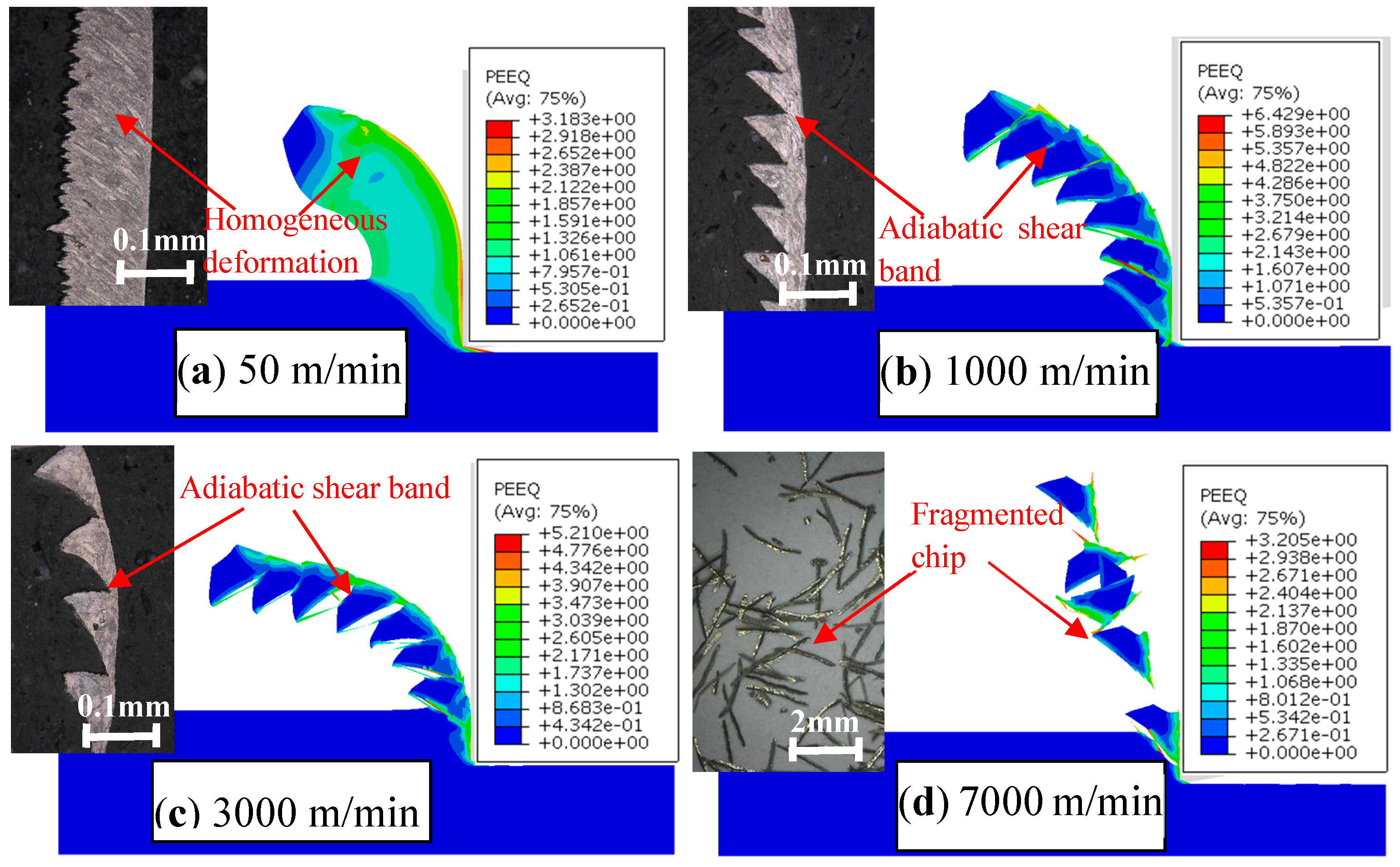
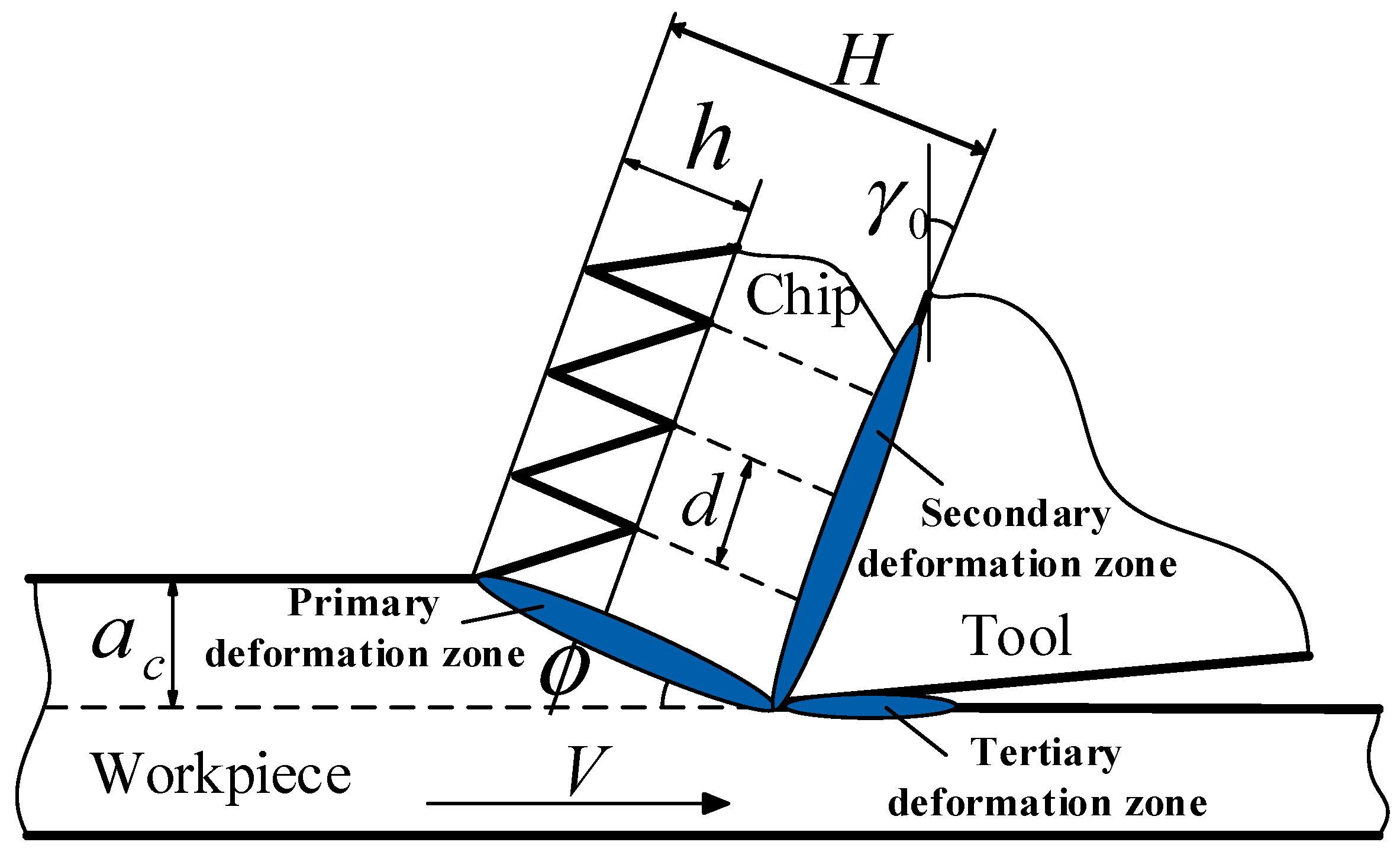
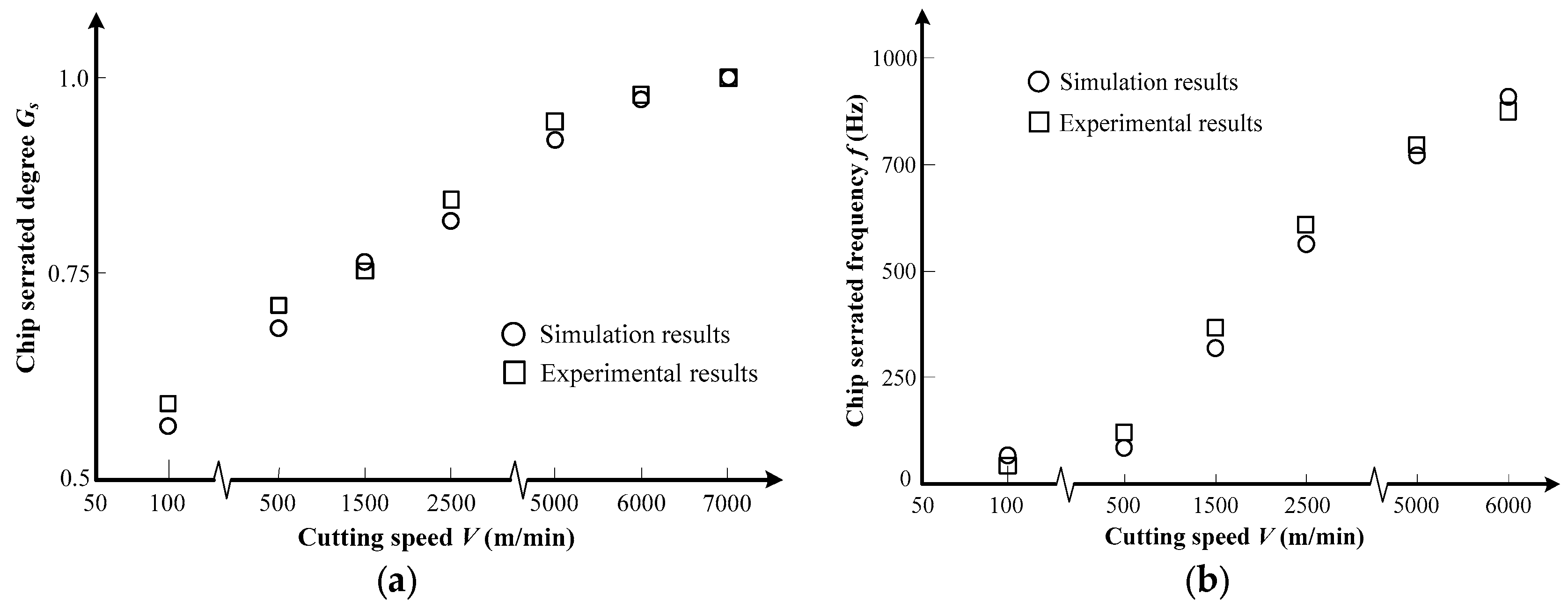
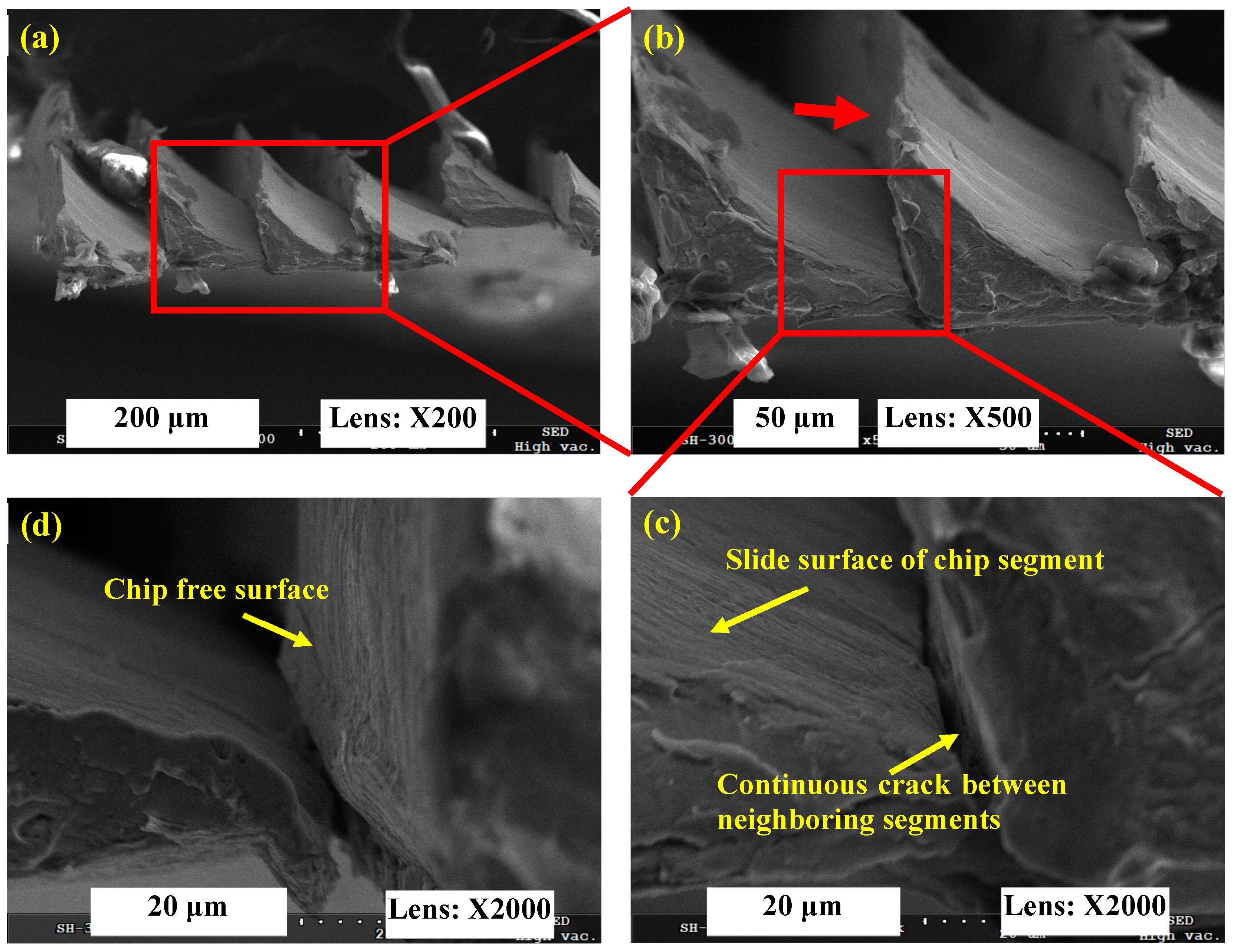
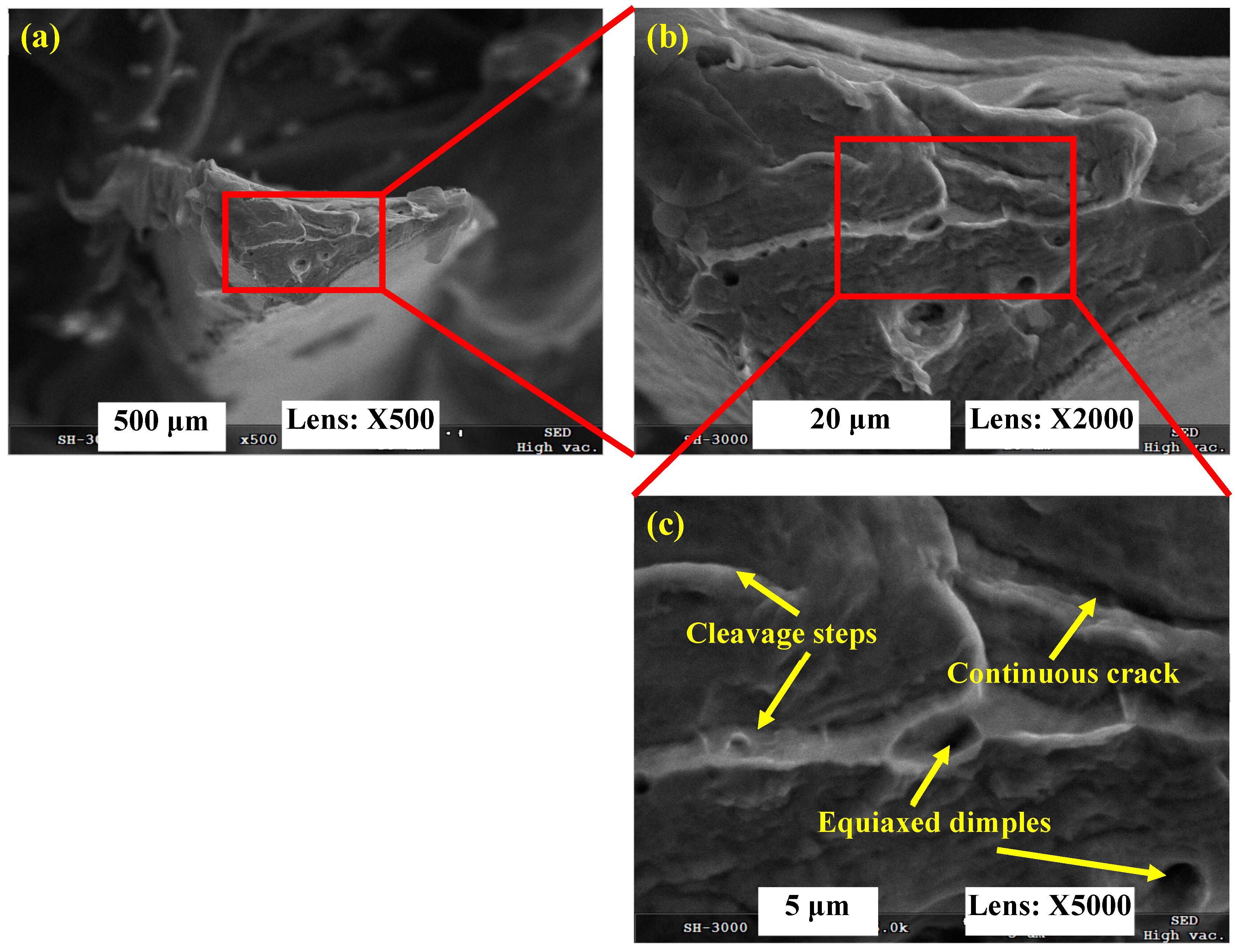
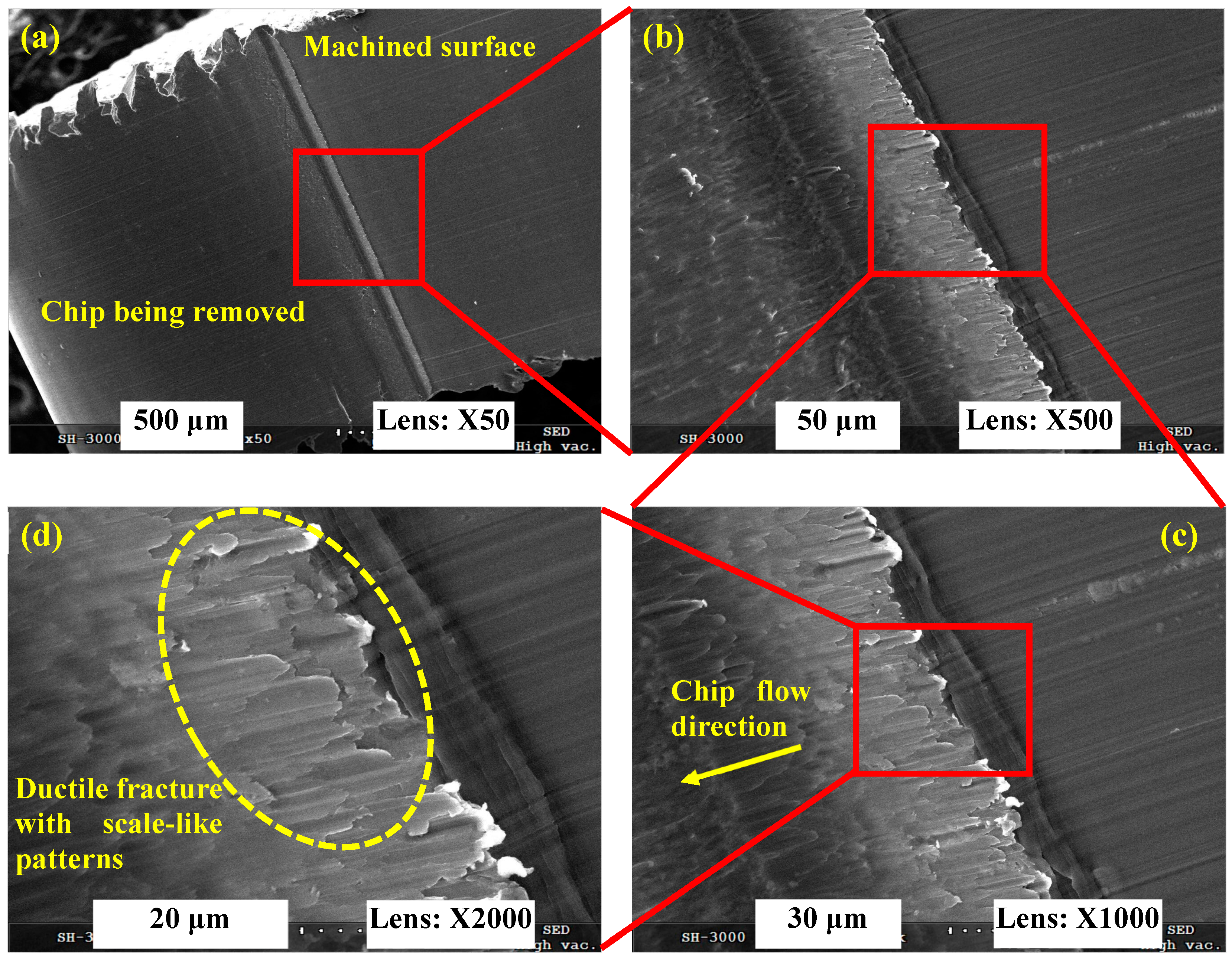
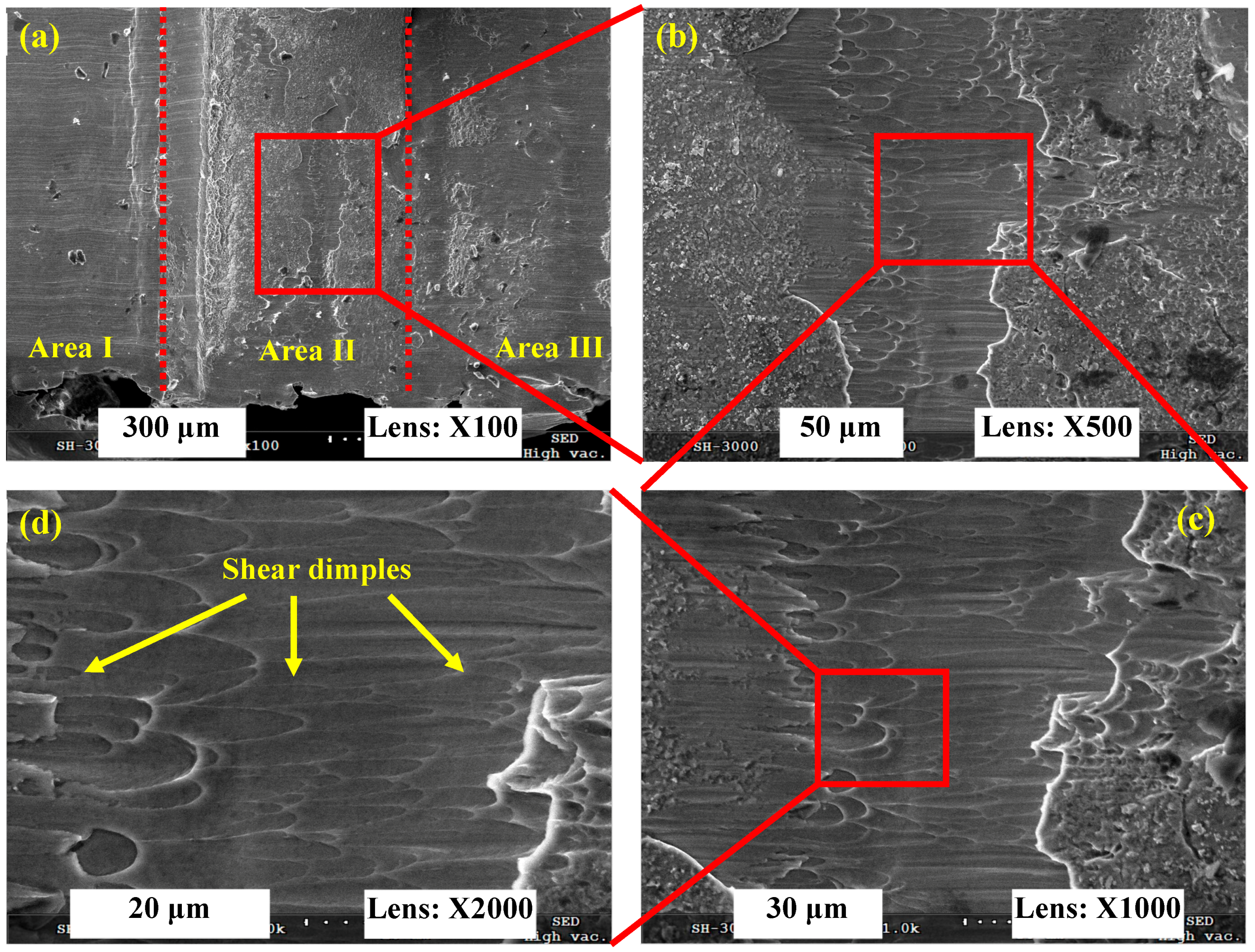
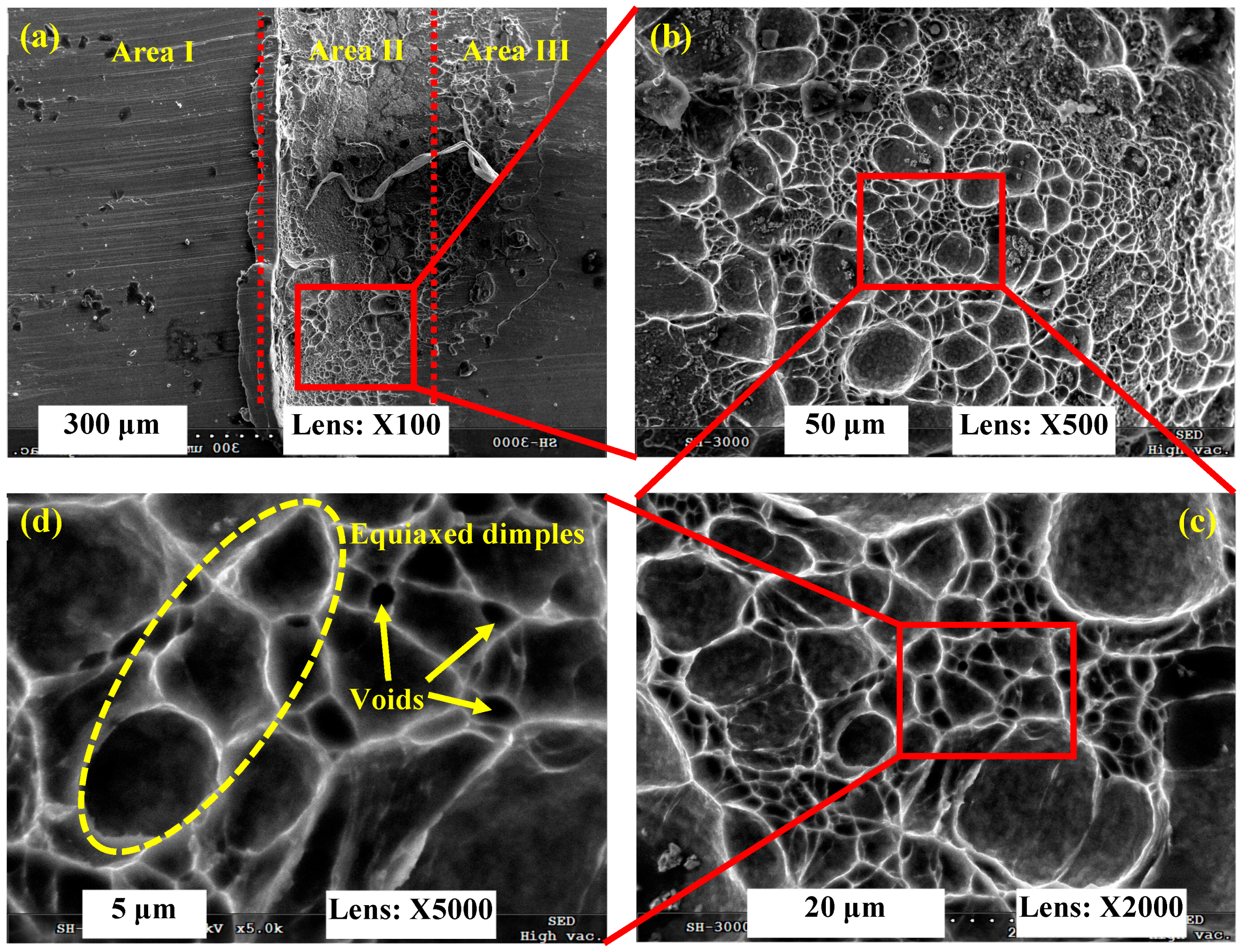
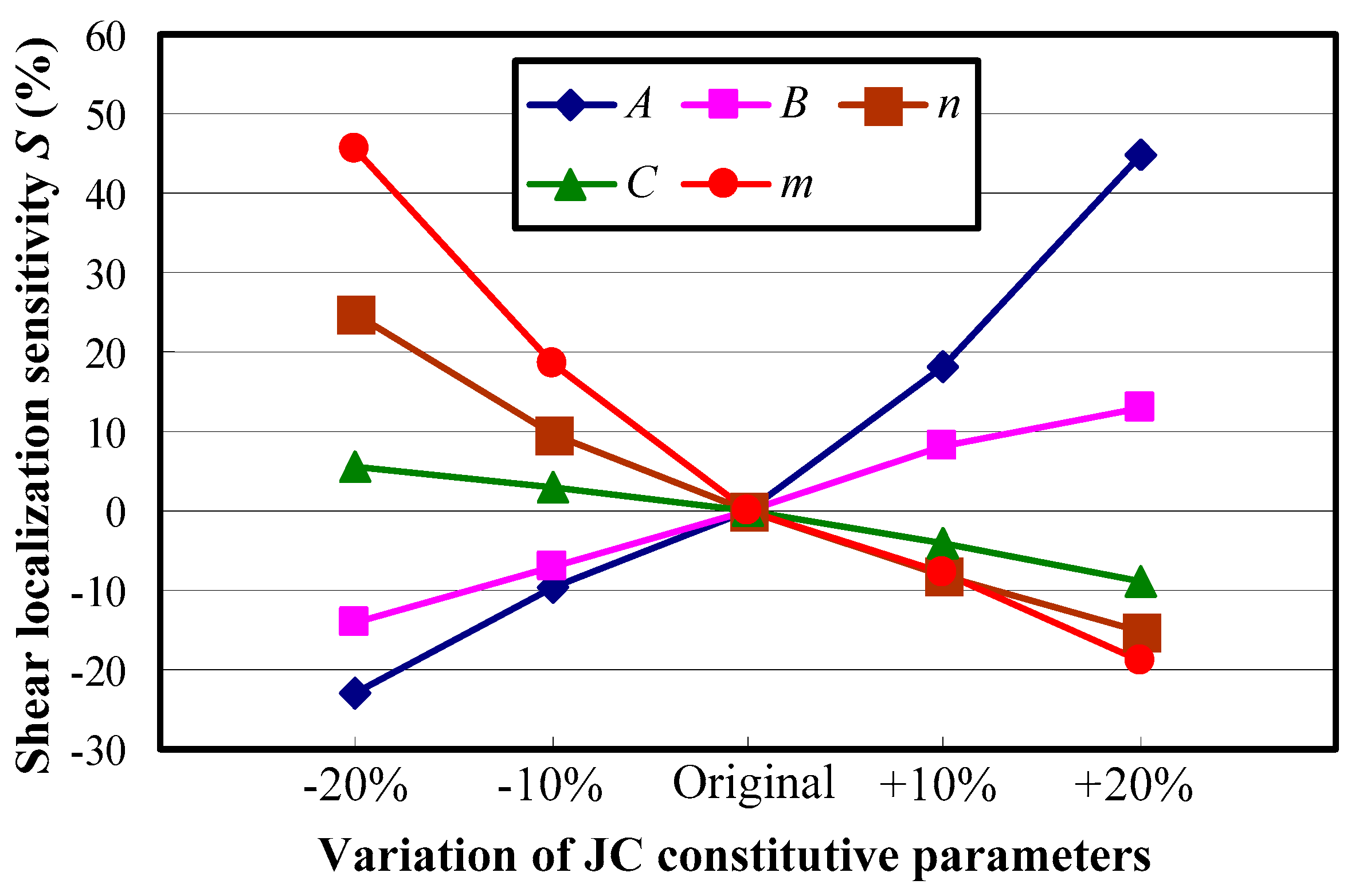
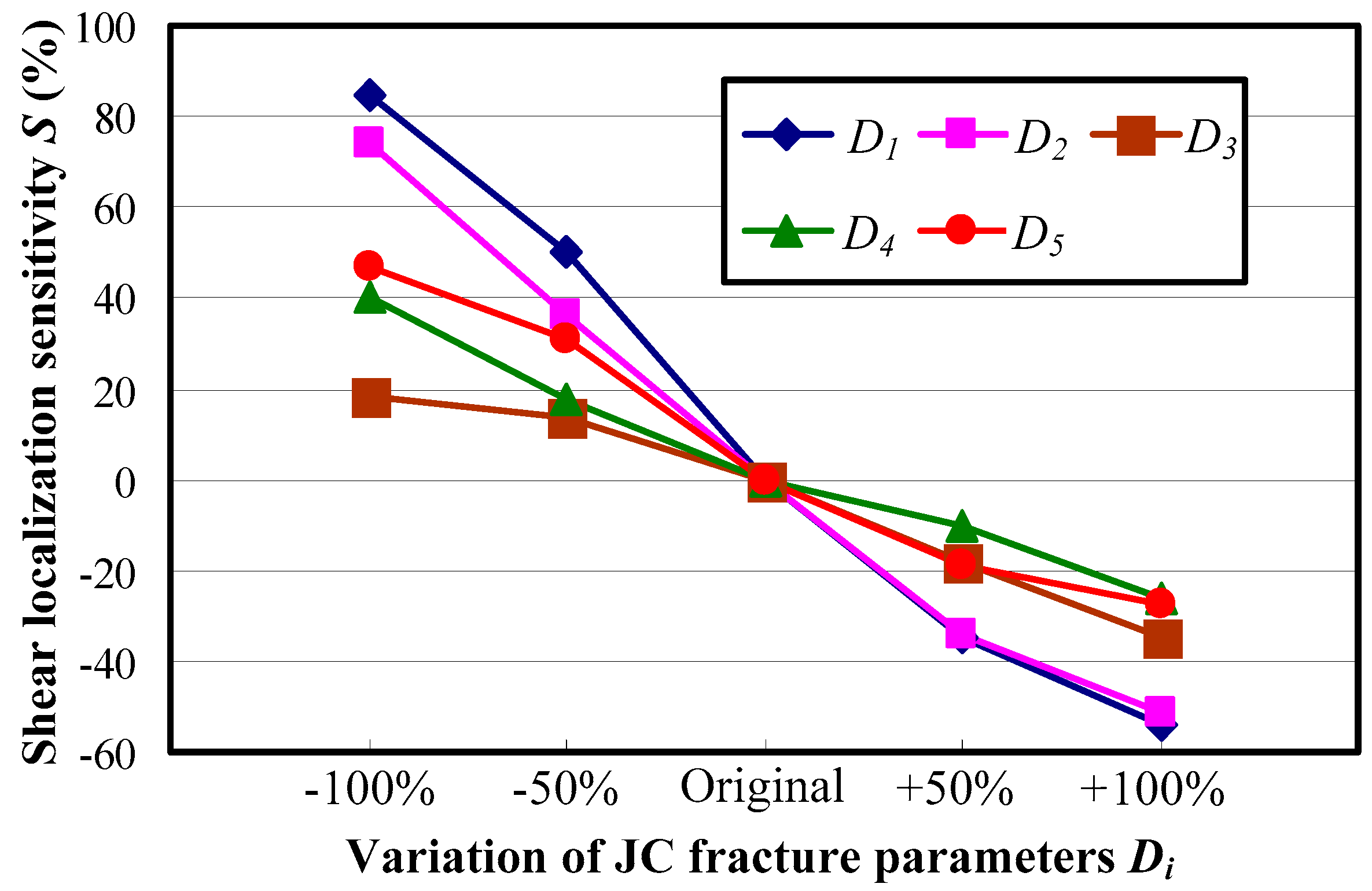
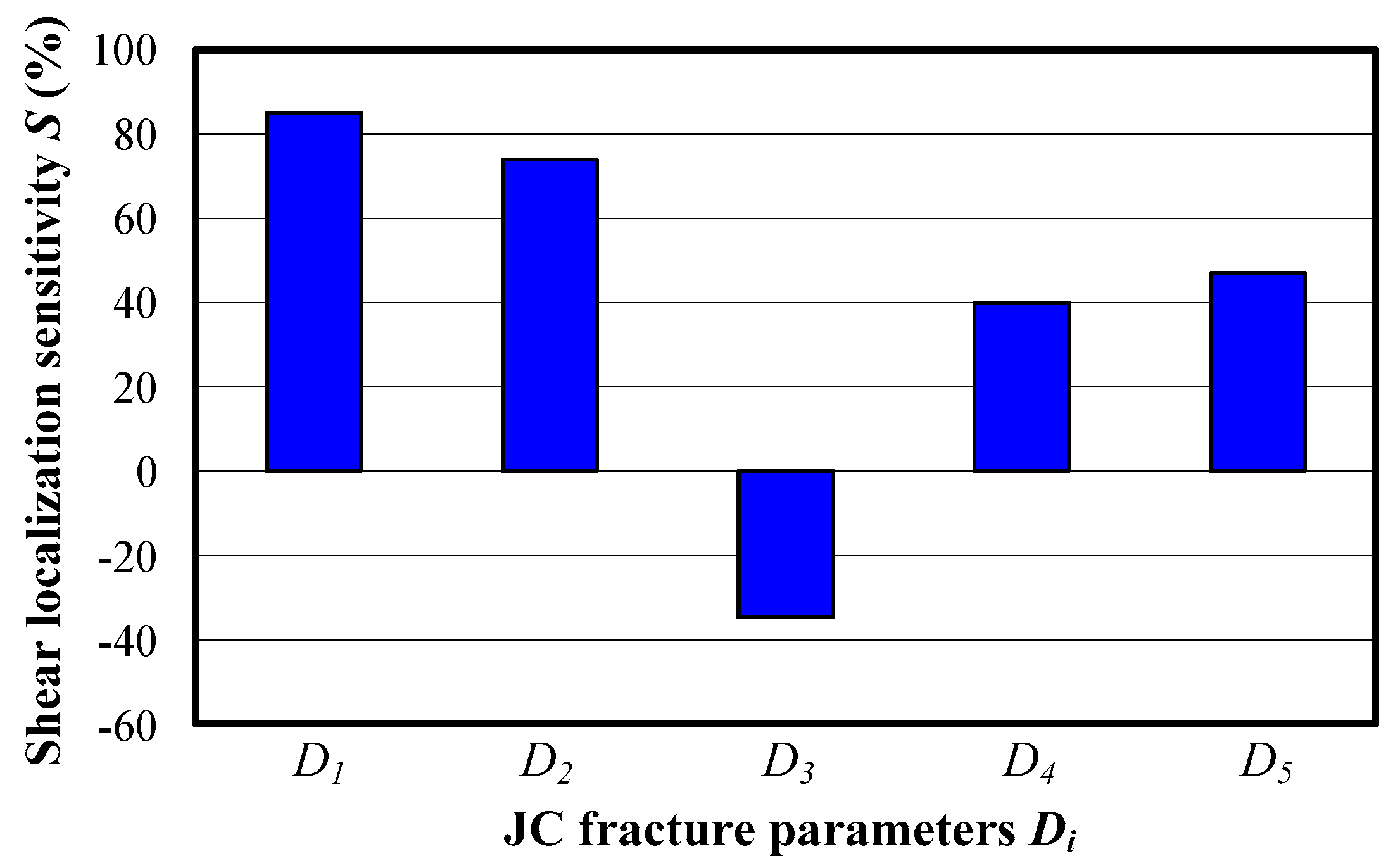
| A (MPa) | B (MPa) | n | C | m |
|---|---|---|---|---|
| 1290 | 895 | 0.526 | 0.016 | 1.55 |
| Density (kg/m3) | Elastic Modulus (GPa) | Poisson’s Ratio | Thermal Conductivity (W/m·K) | Specific Heat (J/kg·K) | Thermal Expansion Coefficient × 10−6 (/K) | Melting Temperature (K) |
|---|---|---|---|---|---|---|
| 8240 | 200 (93 K) 181 (573 K) 160 (773 K) 141 (973 K) | 0.3 (293 K) 0.3 (473 K) 0.31 (691 K) 0.32 (873 K) | 10.63 (293 K) 14.7 (373 K) 17.8 (573 K) 19.6 (773 K) | 435 (293 K) 481.4 (573 K) 514.8 (773 K) 573.4 (973 K) | 11.8 (293 K–373 K) 13.0 (293 K–573 K) 14.1 (293 K–673 K) 14.8 (573 K–873 K) | 1573 |
| D1 | D2 | D3 | D4 | D5 |
|---|---|---|---|---|
| 0.04 | 0.75 | −1.45 | 0.04 | 0.89 |
| Parameters | ↓ 20% | ↓ 10% | Original | ↑ 10% | ↑ 20% |
|---|---|---|---|---|---|
| A | 1032 | 1161 | 1290 | 1419 | 1548 |
| B | 716 | 805.5 | 895 | 984.5 | 1074 |
| n | 0.4208 | 0.4734 | 0.526 | 0.5786 | 0.6312 |
| C | 0.0128 | 0.0144 | 0.016 | 0.0176 | 0.0192 |
| m | 1.24 | 1.395 | 1.55 | 1.705 | 1.86 |
| Di | ↓ 100% | ↓ 50% | Original | ↑ 50% | ↑ 100% |
|---|---|---|---|---|---|
| D1 | 0 | 0.02 | 0.04 | 0.06 | 0.08 |
| D2 | 0 | 0.375 | 0.75 | 1.125 | 1.5 |
| D3 | −2.9 | −2.175 | −1.45 | −0.725 | 0 |
| D4 | 0 | 0.02 | 0.04 | 0.06 | 0.08 |
| D5 | 0 | 0.445 | 0.89 | 1.335 | 1.78 |
© 2018 by the authors. Licensee MDPI, Basel, Switzerland. This article is an open access article distributed under the terms and conditions of the Creative Commons Attribution (CC BY) license (http://creativecommons.org/licenses/by/4.0/).
Share and Cite
Wang, B.; Liu, Z.; Hou, X.; Zhao, J. Influences of Cutting Speed and Material Mechanical Properties on Chip Deformation and Fracture during High-Speed Cutting of Inconel 718. Materials 2018, 11, 461. https://doi.org/10.3390/ma11040461
Wang B, Liu Z, Hou X, Zhao J. Influences of Cutting Speed and Material Mechanical Properties on Chip Deformation and Fracture during High-Speed Cutting of Inconel 718. Materials. 2018; 11(4):461. https://doi.org/10.3390/ma11040461
Chicago/Turabian StyleWang, Bing, Zhanqiang Liu, Xin Hou, and Jinfu Zhao. 2018. "Influences of Cutting Speed and Material Mechanical Properties on Chip Deformation and Fracture during High-Speed Cutting of Inconel 718" Materials 11, no. 4: 461. https://doi.org/10.3390/ma11040461





